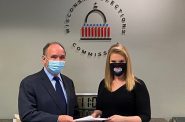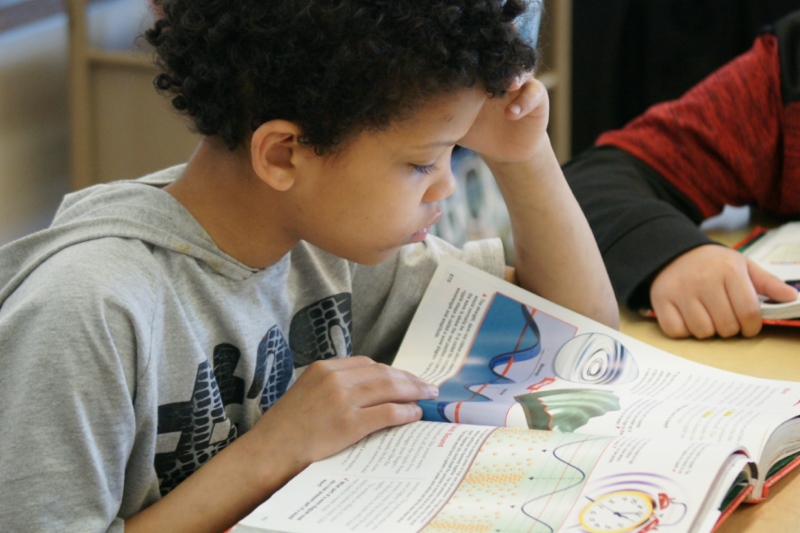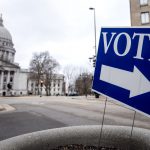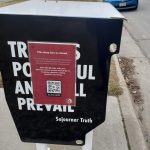Choice Helps Few Public School Students
68% of voucher students already attended private schools.
Since inception, taxpayers have spent heavily for the three Wisconsin voucher programs: $2.2 billion for Milwaukee, $57.3 million for Racine, and $51.3 million for the state-wide expansion. Costs now total $2.3 billion. Meanwhile, studies show that vouchers do not improve student outcomes.
An estimated 4.6 million residents provide the funding through their payment of state sales or income taxes (general purpose revenues) or property taxes. The money is transferred through vouchers to private schools, 96% of whom are religious. This state subsidy has proven to be appealing. Currently, 32,560 students receive this entitlement.
Some of the spending goes to students who did not transfer from a public school. Choice was not exercised. An estimated 68% of students receiving vouchers in the state-wide expansion already attended a private school.
Much of the spending goes to students who did transfer. For them, it would seem that public school spending would be reduced. Closer examination, however, shows that education costs may not significantly decline. Consider, for example, a public elementary school. If a first grader receives a voucher and transfers to a private school, the size of her class is reduced from 25 to 24 students. The cost of a set of textbooks will be avoided. Unchanged, however, are the costs of instruction, administration, student transportation, facility maintenance and food service. If 25 or so students transfer, if all are 1st graders and if all live in a school’s neighborhood, then one educator position can be eliminated along with related costs in administration and transportation. This scenario does not commonly occur.
For many voucher students who transfer from a public to private school, taxpayers now pay twice. First, they pay the cost of the educational opportunity at a public school. Second, they pay for the voucher.
Three more recent studies, conducted in 2015 and 2016, show declines in academic achievement in voucher programs. Students in Louisiana lost ground in math, reading, science and social studies. Voucher students in Indiana scored lower on tests in reading and math. Ohio students with vouchers fared worse on state exams compared to their public school peers.
The Wisconsin Institute for Law and Liberty (WILL) conducted their own study which claims that Milwaukee voucher students do better on the ACT and Forward Exam, once all relevant control variables are taken into account. Unfortunately, the study does not control for a significant source of bias: students with disabilities.
In an apples-to-apples comparison, the students in the public school and voucher school must be comparable. If they are not, the researcher needs to control for the difference. Then if students in one school score higher, the results might be attributable to the school.
The students in the public and private schools studied by WILL differ in a way that influences test scores. Nineteen percent of Milwaukee public school students have a disability (e.g. dyslexia, autism) compared to only 3.1% in the area’s voucher schools. Students with disabilities score much lower on standardized tests than students without disabilities. Unfortunately, the researcher decided to not control for this difference. By not controlling for disabilities, the study fails to produce an apples-to-apples comparison.
A second state-wide school system, privately owned but publicly funded, is unsustainable. It will negatively impact public schools, which the state is constitutionally required to provide and maintain. Wisconsin cannot afford both.
The controversy can be resolved with a three-step solution:
- List the cost of vouchers in annual property tax bills. Residents have a right to know how their money is being spent. A proposal calling for this action has been introduced in the legislature.
- Separate future voucher spending from the biennial budget so it receives a stand-alone vote.
- Ask WILL to repeat its study, with all significant sources of bias taken into account including student disabilities. Since WILL, financially backed by the Bradley Foundation, advocates for voucher programs, the final study should be peer-reviewed.
Carol Lenz and Jim Bowman are members of Fox Cities Advocates for Public Education.
Op-Ed
-
Why Vote for MPS Funding Referendum
 Mar 30th, 2024 by Nehemiah Edwards
Mar 30th, 2024 by Nehemiah Edwards
-
Wisconsin’s Very Own Rudy Giuliani Should Not Oversee Judicial Ethics
 Mar 25th, 2024 by Richard Niess
Mar 25th, 2024 by Richard Niess
-
Voting at Wisconsin’s Universities Isn’t Easy
 Mar 17th, 2024 by Nicole Laudolff
Mar 17th, 2024 by Nicole Laudolff
















This is good stuff right here. Vouchers have resulted on spending,more while getting less with less accountability. It is a straight subsidy by taxpayers to these schools (since most voucher kids were already attending), while funneling money away from public schools and raising property taxes in the process.
Oh, but if you’re Betsy DeVos or Scott Jensen, this scam pays handsomely for you, and you kick back some of the proceeds to GOP puppet politicuans, and continue the downward cycle.
The jury’s back on this one. “Choice” in schools causes more problens than it solves. Deal with POVERTY and the massive social and economic segregation,that has crippled Milwaukee and its stagnant metro area. But suburba-GOPs don’t dare to give a care about that
Why shouldn’t those people get money from the state, they save us billions.
Not really, WCD. The ones you don’t educate properly today are the ones breaking into your suburban mansion next decade.
That’s true Rich considering the skyrocketing crime rates in the suburbs (while at the same time crime rates are plunging in urban areas).
Did it ever occur to you that parents send their children to schools of choice for reasons other than simple “outcomes,” which are dubious, anyway, since they’re found using low-quality standardized tests. Parents want choice because they value a safe environment, morality, and so forth. Telling families they shouldn’t want choice because you think public schools are better is the same as saying everyone should eat vanilla ice cream and vanilla ice cream only because it’s your favorite and you think it’s healthier. Let parents raise their children how they see fit.
When the focus becomes on creating new “flavors” of ice cream without knowing if the new types of education actually work, that’s the point you don’t need government money.
Find your favorite flavor with your own cash, let the rest of us have good schools for our kids.